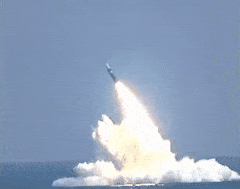
Nuclear Testing Chronology: 1980's-1990's



1980
March - The U.S. Defense Nuclear Agency announces that the Enewetak nuclear cleanup is completed. The estimated cost of the cleanup and rehabilitation was $218 million. Enewetak Islanders begin returning home to the southern islands in the atoll.
1981
The Bikinians file a class action law suit against the U.S. government in U.S. courts seeking $450 million in compensation. Attorneys for the Marshall Islands Atomic Testing Litigation Project file lawsuits on behalf of several thousand Marshall Islanders seeking about $4 billion in compensation from the United States for personal injuries from the nuclear testing.
1982
The U.S. establishes a second trust fund of $20 million for the Bikini people. Later, it will increase this with an additional $90 million appropriation in the late 1980s.
1983
Compact of Free Association is approved in a plebiscite by about 60 percent of Marshal Islands voters. The Compact includes a Section 177 trust fund of $150 million that is to provide $270 million in compensation payments over the 15 year life of the Compact (Bikini $75 million; Enewetak $48; Rongelap $37 million; Utrik $22 million; Nuclear Claims Tribunal $45 million; $2 million annually for medical care for the "four atolls" 53 million for a nationwide radiological survey; etc.).
1985
March - In a statement delivered to Rep John Seiberling, chairman of the subcommittee on public lands and national parks, Dr. Thomas Hamilton states: "I have performed examinations on over 7,000 people from the northern atolls and from three southern atolls...There are several northern atolls in which the prevalence rates of thyroid neoplasia (benign and malignant) are equal to or greater than those observed by Brookhaven on Utrok Atoll where the radiation dose is known."
May - Rongelap people evacuate their atoll, moving to Mejatto, a small island in the northwestern section of Kwajalein Atoll. Rongelap leaders say they fear that continued residence on Rongelap will expose them to dangerous levels of radiation. The Greenpeace ship "Rainbow Warrior" [below] as seen in early June 1985 during the third leg of the Rongelap evacuation and re-location to Mejato Island in Kwajalen Atoll due to lingering fears of radiation on Rongelap.
1986
The U.S. Congress approves the Compact of Free Association. The Compact includes an espousal provision, prohibiting Marshall Islanders from seeking future legal redress in U.S. courts and dismissing all current court cases in exchange for a $150 million compensation trust fund. October The Compact [COFA] between America and the Marshall Islands goes into effect. UPDATE [2021] The Compact money for the Nuclear Claims Tribunal ran out as the initial $150 million was quickly exhausted. The RMI Government claims that the U.S. owes the Nuclear Claims Tribunal and the Marshallese people two billion dollars for the nuclear legacy.
Former Senator and Health Minister of the RMI Jeton Anjain led the people of Rongelap in their decision to evacuate their homeland of 2,000 years in 1985 with the help of Greenpeace. Based on a Dept. of Energy report in 1980 Sen. Anjain concluded that Rongelap was no longer safe to live on, and moved the Rongelap community to an island in Kawjalain Atoll

Rongelap Senator Jeton Anjain, winner of the 1992 prestigious "Goldman Prize."
Sitting aboard the Greenpeace ship "Rainbow Warrior" [two months before the French DGS&E blew it up, killing a crew member] Sen. Anjain plans the next phase of the 1985 Rongelap evacuation and relocation to Mejato in Kwajalein.
The following two videos introduce the Compact of Free Association [COFA] and provide an example of an updated rendering and implementation of COFA.
NOTE: During the build-up to COFA in the 1980s our Coalition [National Council of Churches, United Methodists, the Quakers, Amnesty Intl., Greenpeace] opposed Section177 ["Espousal"] in the Compact which prevented Marshallese from bringing lawsuits against the U.S. for nuclear related health & environmental damage. The Compact passed in 1986 with Section 177 intact.
Note: The following 1990 U.N. Trusteeship Council testimony by Glenn Alcalay makes the case that the "espousal" clause in Section 177 of the COFA was so important, the U.S. flatly stated: "Either we get Section 177 or no Compact."
Click on this PDF file
1991
August - The Nuclear Claims Tribunal approves its first compensation awards, based on a list of health conditions presumed to be caused by radiation, and therefore eligible for compensation. Because of concerns that the $45 million available may not be adequate to pay all claims, the Tribunal limits initial payments to 25 percent of the total awards.
1994
January - U.S. Rep. George Miller writes to President Bill Clinton: "Some Rongelapese have said they believe they were used as 'guinea pigs' to further U.S. understanding of the effects of radiation on humans. In light of recent disclosures regarding actual radiation experimentation in the United States during this period, that possibility cannot be ignored." He also comments on an ongoing thyroid study in the Marshalls. "The findings of the thyroid survey are disturbing. The Committee has been informed that even if only 50 percent of the survey results are verified...the incidence rate is still significantly higher, by a factor of 100, than the rate of thyroid cancer found anywhere else in the world." The U.S. Department of Energy begins releasing thousands of previously classified nuclear test era documents, many of which confirm the wider extent of the fallout contamination in the Marshall Islands.
July - U.S. Representatives George Miller and Ron de Lugo write to Dr. Ruth Faden, chairperson of the Advisory Committee on Human Radiation Experiments: "...There is no doubt that the AEC intentionally returned (Marshallese) to islands which it considered to be "by far the most contaminated places in the world,' but which it told the people were safe. Nor is there any doubt that the AEC, through the Brookhaven National Laboratory, then planned and conducted test after test on these people to study their bodies' reaction to life in that contaminated environment. "
December - A five-year study of 432 islands in the Marshall Islands shows that 15 atolls and single islands -almost half of this nation were dusted by radioactive fallout from the U.S. nuclear weapons tests of the 1950s. However, the Nationwide Radiological Survey -funded by the U.S. and conducted by the Marshall Islands government -states that with the exception of islands in Bikini, Enewetak, Rongelap and Rongerik, "the amount of radioactivity remaining in the environment has diminished to levels that are not of concern."
Paul C. Warnke, formerly the chief nuclear arms negotiator for the U.S. who held other high level positions for the State Department, states his support for additional compensation, observing that Marshall Islands negotiators of the Compact were unaware of the magnitude of radiation problems in the Marshall Islands when they negotiated compensation levels with the United States.






